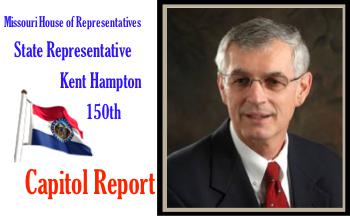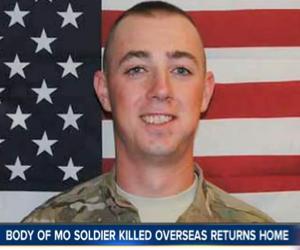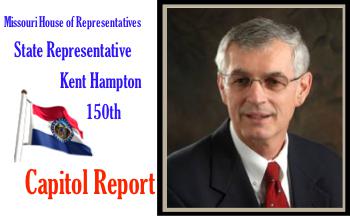
Submitted by
Dee Loflin, SMT Manager/Writer
United States Nicknamed Uncle Sam
On September 7th, 1813, the United States gets its nickname, Uncle Sam. The name is linked to Samuel Wilson, a meat packer from Troy, New York, who supplied barrels of beef to the United States Army during the War of 1812. Wilson (1766-1854) stamped the barrels with "U.S." for United States, but soldiers began referring to the grub as "Uncle Sam's." The local newspaper picked up on the story and Uncle Sam eventually gained widespread acceptance as the nickname for the U.S. federal government.
In the late 1860s and 1870s, political cartoonist Thomas Nast (1840-1902) began popularizing the image of Uncle Sam. Nast continued to evolve the image, eventually giving Sam the white beard and stars-and-stripes suit that are associated with the character today. The German-born Nast was also credited with creating the modern image of Santa Claus as well as coming up with the donkey as a symbol for the Democratic Party and the elephant as a symbol for the Republicans. Nast also famously lampooned the corruption of New York City's Tammany Hall in his editorial cartoons and was, in part, responsible for the downfall of Tammany leader William Tweed.
Perhaps the most famous image of Uncle Sam was created by artist James Montgomery Flagg (1877-1960). In Flagg's version, Uncle Sam wears a tall top hat and blue jacket and is pointing straight ahead at the viewer. During World War I, this portrait of Sam with the words "I Want You For The U.S. Army" was used as a recruiting poster. The image, which became immensely popular, was first used on the cover of Leslie's Weekly in July 1916 with the title "What Are You Doing for Preparedness?" The poster was widely distributed and has subsequently been re-used numerous times with different captions.
In September 1961, the U.S. Congress recognized Samuel Wilson as "the progenitor of America's national symbol of Uncle Sam." Wilson died at age 88 in 1854, and was buried next to his wife Betsey Mann in the Oakwood Cemetery in Troy, New York, the town that calls itself "The Home of Uncle Sam."
By the time you read this the Labor Day holiday will have passed. School reunions, family reunions and many vacations will have taken place. I hope you not only took the time to enjoy, but also appreciated the value of these relationships. Dove season opens September 1st with the sounds of “pop, pop, pop”. Enjoy and continue to be careful while relishing this popular sport. See ya church Sunday!!!
As always, it is an honor to serve you in the Missouri House. If you would like to discuss any issue, please call 573-751-3629. You can also email me at kent.hampton@house.mo.gov . I look forward to hearing from you.

Submitted by
Dee Loflin, SMT Manager/Writer
Jefferson City, Missouri - Gov. Jay Nixon has ordered that the U.S. and Missouri flags at state buildings in all 114 counties and the City of St. Louis be flown at half-staff on Thursday, Sept. 5.
This all to honor the bravery and sacrifice of Private First Class Jonathon M.D. Hostetter. Private First Class Hostetter, age 20, of Humphreys, was a soldier in the United States Army serving in support of Operation Enduring Freedom in Afghanistan.
He died on Aug. 23 while serving his country in Wardak Province, Afghanistan; his funeral will be held on Sept. 5.
In addition, Gov. Nixon has ordered that the U.S. and Missouri flags at all state buildings in Sullivan County be flown at half-staff from Sept. 6 to Sept. 11.
"Private First Class Hostetter served our country with bravery and dedication as a soldier in the United States Army, and I ask all Missourians to remember his sacrifice when they see the lowered flags," Gov. Nixon said. "Our thoughts and prayers are with his family as they mourn."
Private First Class Hostetter was assigned to the 40th Engineer Company, 2nd Engineer Battalion, 36thEngineer Brigade, White Sands Missile Range, New Mexico. His awards and decorations include the Bronze Star Medal, Purple Heart, Army Good Conduct Medal, National Defense Service Medal, Afghanistan Campaign Medal with Bronze Service Star, Global War on Terrorism Service Medal, Army Service Ribbon, Overseas Service Ribbon, NATO Medal, Meritorious Unit Commendation, Combat Action Badge, Combat and Special Skill Badge Basic Marksmanship Qualification Badge (Bar, Weapon: Rifle (Inscription: Rifle), Expert), and the Overseas Service Bar.

Submitted by
Dee Loflin, SMT Manager/Writer
How Did the Boundary of Missouri Come to Include the "Bootheel"?
The inclusion of the "bootheel" in the boundaries of Missouri has been credited to John Hardeman Walker, a landowner and influential citizen of southeast Missouri. Walker was born in Tennessee in 1794 and came to the New Madrid area of the Territory of Missouri at the age of 16. When the New Madrid earthquakes began a year later, in December 1811, many of the area's citizens moved away. Walker, however did not leave the area and his cattle-raising enterprise; instead he acquired more property and soon became known as the "Czar of the Valley." His extensive landholdings were located in Little Prairie, near present-day Caruthersville. This area fell under the jurisdiction of the Missouri Territory as administered from the town of New Madrid.
In 1818, the Missouri territorial legislature presented a memorial to the United States Congress requesting permission to organize a state government. At that time, the southern boundary for Missouri was fixed at 36°30'. Walker and the people of Little Prairie realized this line would place their lands some 25 miles south of the Missouri border. Little Prairie would be under the jurisdiction of the Arkansas territorial government, not the state government of Missouri. Walker, who preferred the area, and his holdings, to be under the protection of Missouri state laws, lobbied in Missouri and Washington, D.C. for inclusion of the "bootheel" within the boundaries of the state of Missouri.
November 22, 1818, the territorial legislature adopted a memorial to Congress for the admission of Missouri to the Union, proposing boundaries for the state that included the Little Prairie area. The memorial fixed the boundaries as follows:
"Beginning at a point in the middle of the main channel of the Mississippi River at the 36 th degree of north latitude and running in a direct line to the mouth of the Black river, a branch of the White river; thence in the middle of the main channel of the White river to where the parallel of 36 degrees and 30 minutes north latitude crosses the same; thence with that parallel of latitude due west."
On March 6, 1820, when the Territory of Missouri requested admission to the Union with the modified boundary in the southeast corner, the request was granted. This acquisition increased the total area of Missouri by some 980 square miles (627,000 acres).
This small amount of history just proves what many have thought and said, Missouri wanted the bootheel, and what a valuable asset it is. Schools have started back and schedules and routines have restarted after temporarily being on pause. Activities are in full force from baseball to football. Be a supporter of your community and activities. Every child wants to know someone is there just to watch them. See ya in church Sunday!!
As always, it is an honor to serve you in the Missouri House. If you would like to discuss any issue, please call 573-751-3629. You can also email me at kent.hampton@house.mo.gov . I look forward to hearing from you.

Submitted by
Dee Loflin, SMT Manager/Writer
8th Congressional District - Congressman Jason Smith announced the schedule for his Farm Tour. The Farm Tour started on Monday, August 19 and will run through Friday, August 23.
“Agriculture is the number one industry in our Eighth Congressional District and it is essential to the health of our rural economy. Our district is also one of the most diverse agriculture districts in the country growing everything except sugar and citrus fruits. During the weeklong tour I will be in 11 counties and hold 20 tours and discussions,” said Smith. “I am looking forward to being on my Farm Tour and meeting the families who farm the land and raise livestock in our region. We will be listening to cattle farmers; row croppers and we will even visit a Christmas tree farm and a peach orchard. The information I learn on the Farm Tour will be critical as policy is being created in Washington.”
Location on the Farm Tour Schedule Close to Stoddard County
WHAT: Farm Tour stop at Farm Bureau Annual Appreciation Dinner
WHERE: 2114 North Westwood Blvd, Poplar Bluff, MO
WHEN: Wednesday, August 21, 2013 from 6:30PM-8:00PM
WHAT: Farm Tour stop at Blakemore Cotton & Gin
WHERE: 402 North Main Street, Campbell, MO
WHEN: Thursday, August 22, 2013 from 1:30PM-2:30PM
WHAT: Farm Tour stop at Hamra Hydroponics Farm
WHERE: 160 County Road 831, Sikeston, MO
WHEN: Thursday, August 22, 2013 from 3:30PM-4:30PM
WHAT: Farm Tour stop at Farm Bureau Dinner
WHERE: Rebecca Sharp’s 1325 Mill Street, New Madrid, MO
WHEN: Thursday, August 22, 2013 from 6:00PM-8:30PM
WHAT: Farm Tour stop at Riceland Foods
WHERE: 918 New Madrid County Port, Marston, MO
WHEN: Friday, August 23, 2013 from 9:00AM-10:00AM
WHAT: Farm Tour stop at Hulshof Soybean and Corn Farm
WHERE: Sowinski Potato Shed, 3780 W. County Road 220, Bertrand,
WHEN: Friday, August 23, 2013 from 11:00AM-12:00PM
WHAT: Farm Tour stop at MRM Ag
WHERE: 3468 West Highway 80, East Prairie, MO
WHEN: Friday, August 23, 2013 from 1:00PM-2:00PM

Submitted by
Dee Loflin, SMT Manager/Writer
8th Congressional District - Last week I spent time working various jobs throughout our Eighth Congressional District on a Work-A-Day Tour. My goal in touring the district and working local jobs was to meet new people and to learn about the challenges families in our region are facing.
In Festus I mixed paint at a hardware store, I helped put siding on a house in Ironton, worked the front desk at a resort in Steelville and even got the chance to read the news on a morning radio show in Cape Girardeau.
I cannot tell you how refreshing it was to spend time with people who are not afraid of hard work and who are committed to making their communities a good place to live, work and raise a family. While our district is large and diverse, every person I met last week shared a common pride in our nation and a love for our corner of rural Missouri.
In Farmington I spent time bagging groceries at Country Mart. In conversations I shared with employees and customers they talked about the ever increasing cost of food and how it is impacting their families.
While Washington should not directly control the cost of goods and services, Congress can create an environment of certainty to help stabilize prices. Additionally, a national energy policy that would keep energy costs under control, and input costs in check, which would in turn keep grocery bills lower for Missouri families.
Our rural district is home to many unique small businesses that are truly the backbone of our economy. In Mansfield I spent time working at Engrave-A-Crete during my tour. Although the company is famous for their decorative concrete projects, they have also tapped into a niche market of manufacturing urban chicken houses that are sold nationwide. I worked with the crew at Engrave-A-Crete to completely assemble one of the chicken houses.
Nestled into the hills of the Ozarks is the tiny village of Rockbridge and the Rainbow Trout and Game Ranch. People come from far and wide to fish, hunt and ride horses at the ranch. During my time working at Rockbridge I helped serve dinner during the evening rush. I met folks not only from the Show-Me State but also from surrounding states who were enjoying the outdoors at Rockbridge. The Rainbow Trout and Game Ranch is a perfect example of a family owned business that provides jobs in our rural district and also attracts business to our region.
Too often politicians in Washington lose sight of the people they represent. When you elected me to be your voice in Congress a few months ago, I promised myself that I would never forget the challenges families are facing back home in Missouri. My Work-A-Day Tour was a reminder that Washington is not the answer to the problems facing our nation. The solution to our biggest challenges will always be the spirit and commitment to freedom that resides in each American.

